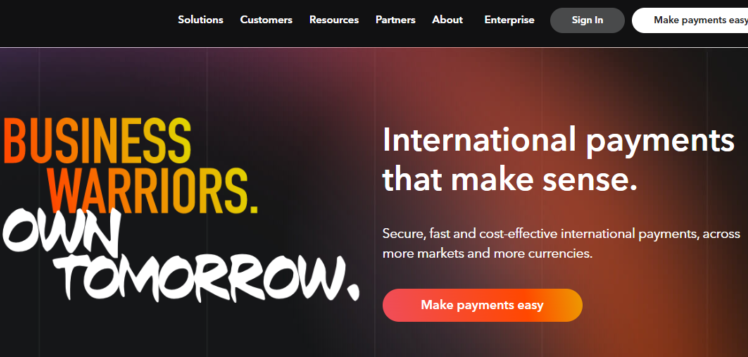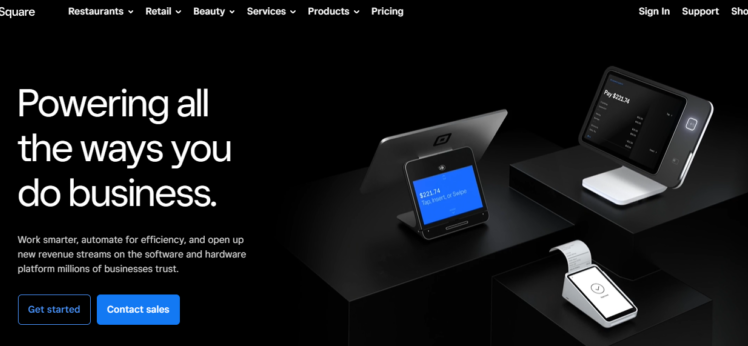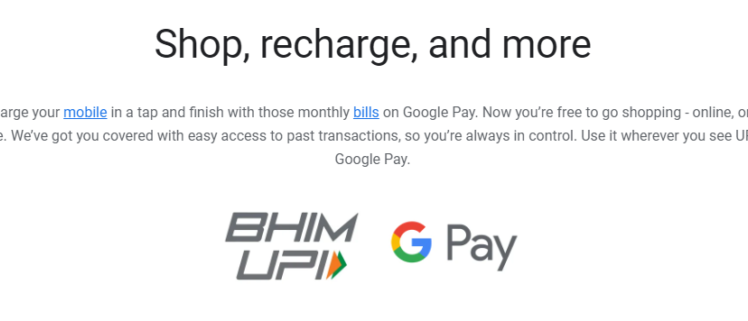5 Best Online Payment Methods for Freelancers in 2024
You might have poured your heart and soul into a project and even delivered a stellar work. But, no payment. Weeks turn into months, and the money you earn feels frustratingly out of reach. Well, that’s the case for most top-paid freelancers out there.
In freelancing, sometimes getting paid is even harder than doing the work for which you get paid. As per studies, 58% of freelancers in four Southeast Asian countries are not getting online payments on time. Failure to find a proper channel for international payment processing is one of the major reasons for that.
That’s why we have curated a list of the top 5 payment methods for freelancers. Let’s check it out!
5 Best Payment Methods for Freelancers
If you are just getting started with your freelance career, choosing a robust online payment system is one of the first things to do. Here are 5 payment processing methods that you can consider:

- PayPal
With over 220 million active accounts, PayPal is standing out as the top choice for freelancers for over a decade. Anyone can start an account in PayPal for free by just entering their personal and bank account details. Therefore, it is accepted globally.
Features
- Instant Payment Transfer: Freelancers can accept the payment and transfer the fund to their bank account within a day usually. This may take up to 4 days, depending upon the clearing process of the bank.
- Easy Management: You can easily create and send a professional invoice with your logo via email to clients. All your invoices can be overviewed from your profile. This way, you can track and manage payments easily.
- Security: PayPal online payment offers many security features to prevent fraud, identity theft, email phishing, etc. It is specifically popular among business clients due to advanced buyer protection policies through which they can seek a refund if a freelancer has not met their standards.
- Global Recognition: Clients from over 200 countries have trusted PayPal as their online payment partner. It supports over 25 different currency types.
- No Setup Charges: You can sign up for a PayPal account free of charge, without any monthly fee. However, PayPal still charges for their services. Check out how.
Price
Apart from conventional monthly fees, PayPal comes up with a variety of pricing structures. The charge of PayPal is incurred in two main ways:
- There is a fixed charge of 30 cents for each transaction. On top of that, there is a percentage-based fee, starting at 1.29%, based on the amount of transaction.
- If you are working with an international client, there may be a currency conversion fee. It depends on the country and time of the transaction. On average, it ranges between 3% to 4% of the base exchange rate.
- There are some additional charges depending on your needs. For example, in order to receive seller protection, you must classify the payments as Goods and Services, which requires a small cost.
Drawbacks
- Risky for Freelancers: Even though PayPal provides reasonable security to Sellers (Freelancers), it provides far more protection to buyers. Clients have 180 days to raise a dispute after payment processing. That means if a client has changed his mind after months and decides to raise a dispute, your hard-earned money is at stake.
- Higher charges: PayPal charges high as compared to other payment platforms. On top of a fixed charge, it charges a percentage of your earnings. If the client decides to pay in a foreign currency, the conversion fee will also be deducted.
- Unreasonable restrictions: PayPal’s online payment gateway is often complained by many freelancers of putting strong restrictions on accounts without any reason. If you are new to PayPal or have not used it for a while, it may put your funds on hold for 21 days without any additional reasons. Sometimes, it may freeze your accounts for up to 6 months without any notice.
- Customer care support: In these times where even start-ups provide round-the-clock assistance, PayPal provides customer care support only during business hours, which is obviously a major drawback.
Verdict
Despite its pressing drawbacks, PayPal stands as the top choice in Freelance payment methods. Many consider PayPal due to the ease of setting it up and the instant transfer feature. If you are someone who is concerned about the safety of online payment systems, this one is indeed the best choice. However, many freelancers from regions where PayPal charges comparatively higher fees (like South America), often avoid it.

2. Stripe
Stripe is a relatively new platform that is perfect for freelancers accepting payments from international clients. It is designed to support freelancers and clients of all sizes, supporting over 135 currencies.
Features
- Low Minimum Amount: some freelance payment systems often put large minimum amount restrictions to withdraw. But in Stripe, you can withdraw amounts as low as $1 USD (based on the country).
- Add-ons: Just like PayPal, you can create professional invoices with Stripe. Moreover, you can use some accounting tools and track the invoices to keep an eye on all financial reports in one place.
- Recurring Payments: Normally, businesses get busy with their day-to-day matters and forget to pay their freelancers on time. Stripe Payments provides a feature through which businesses can set up a fixed payment for the payment cycle. Then, it automatically releases the fund to avoid any fund transfer delays.
- Low Fee: Stripe payment company charges comparatively low fees as compared to other online payment processing companies. See the pricing structure below.
Pricing
- Stripe doesn’t have any monthly fees or setting up charges.
- Stripe charges a flat fee of 2.9% of the total value of the transaction plus 30 cents.
- For accepting international payments, 1% additional charges are levied.
- Additional fees are charged for advanced features like Stripe Radar to detect and block fraud.
Drawbacks
- Limited Coverage: At present, users from just 26 countries can use Stripe even though payments can be accepted from clients all over the world.
- Extra Fee on Dispute: Stripe has a bitter dark side that is a matter of concern for freelancers. Just like PayPal, clients can raise a dispute in Stripe, too. But the difference is that you will be charged with $15 fee when a client raises a dispute, which is refunded only when you win the dispute. If not, you will end up losing all the money plus $15.
- New Solution: Since Stripe is a relatively new payment processing channel, it doesn’t enjoy the same level of trust as its competitors among its clients.
Verdict
Stripe is obviously a robust freelance payment portal with its own set of drawbacks. It is suitable for freelancers dealing with many clients as they can track the reports easily through the dashboard. Moreover, Stripe charges a reasonable charge which makes it a popular choice for economically conservative freelancers.

3. Payoneer
Payoneer is yet another giant online payment system that focuses on international transactions. It has partnered with Upwork to become one of the most popular online payment processing companies. The UK-based firm is often considered a perfect alternative to PayPal due to its wide range of features.
Features
- Wide Coverage: Payoneer is available in over 200 countries and supports more than 150 currencies. Therefore, it is a more trusted choice for freelancers who wish to expand their client base all over the world.
- Instant Credit on Payoneer Account: After transfer, the amount gets credited to your Payoneer account within just 2 hours.
- Custom invoices: Just like other payment processing platforms, Payoneer also gives you the feature to create your own custom invoices to remind clients of payment. You can stay on track with the finances by overviewing the invoices.
- Free Transfer: Payments from clients with a Payoneer account are totally free. Therefore, Payoneer is currently one of the most pocket-friendly online payment systems for freelancers. Check out their detailed pricing structure.
Payoneer Pricing
- Payoneer levies 3% of the transaction for credit card processing.
- Charges 2% for currency conversion in international transactions.
- Payoneer charges $1.50 while transferring the amount to your bank account.
Drawbacks
- Annual account fee: On top of these above-mentioned charges, Payoneer has yet another hidden charge- an annual account fee. In case your account remains inactive for 12 months, you need to pay $29.95 as an annual account fee to use it again. Even though this does not affect active users, many freelancers have raised concerns about it as they were not aware of such hidden fees.
- Delay in Bank Transfer: Once the payment reaches your Payoneer account, you need to wait for almost another 5 days to transfer the funds to the bank.
- Pricing Structure: Although the transactions between two Payoneer accounts are free, other charges are quite heavy. Apart from the bank charges, you will lose up to 2% of the value as currency conversion charges. Coming to credit card processing, Payoneer charges a whopping fee of 3%.
Verdict
Payoneer is an idle choice for freelancers who target international clients due to its support of a wide range of countries and currencies. Their tie-ups with giant freelance job platforms like Upwork make it a trusted payment method. However, it is not recommended for freelancers who require immediate access to the funds.

4. Square
All the above-mentioned payment processing platforms are mainly for online freelancers. So, what about in-service professional freelancers? Well, Square is the perfect solution for such freelancers who accept live payments. All you need to do is just download the app and sign up for an account after entering the bank account details. It is a point-of-sales system that helps every freelancer to stay ahead of the trends.
Features
- Add-ons: apart from other freelance payment methods, Square offers many more features. You can make use of the attractive templates in the platform to create a stellar invoice. It even provides you with a website builder to attract clients from the online space.
- Analytics: Sellers (freelancers) can track your finances in real time with updated data and insights. This way, you can make data-driven decisions quickly.
- Point of Sale (Pos) system: unlike other online payment systems, Square focuses on in-person transactions. Beyond payment processing, it offers a lot of features like inventory management, customer directories, etc.
Pricing
- Square charges 2.9% plus a flat fee of $0.30 for online payments.
- In the case of card payments, Square levies 2.65% plus $0.10 per transaction.
- Chargeback fees are waived off up to $250 per month.
Drawbacks
- Account stability issues: Some users have reported instances where their hard-earned funds were frozen without a strong reason. This is indeed a pressing concern for freelancers dealing with top-paid clients.
- Not Suitable for High-Volume Transactions: The pricing structure of Square starting from 2.65% in addition to a fixed charge is comparatively higher. Therefore, it is not recommended for freelancers with high-volume transactions.
Verdict
Square is an excellent choice for professional freelancers who want to have an easy-to-manage payment management system, especially for handling in-person transactions. With Square, you can accept almost all types of credit cards. However, freelancers who focus on accepting online payments must have a look at its pricing structure before considering Square.

5. Google Pay
Google Pay, one of the simplest online payment solutions, is suitable for freelancers. You can set up an account and connect it with your bank account within minutes. It is perfect for both online and in-person payment processing.
Features
- Security: When it comes to security, Google Pay has a clear edge over other Freelance payment methods. It comes up with tokenization, which creates a unique encrypted number for each transaction and safeguards card details. Moreover, it adds an extra layer of security through PINs, patterns, passwords, biometric verifications, etc.
- Trusted Choice: Just like PayPal, Google Pay is a trusted name in the field of online payment processing with over 150 million worldwide users. Therefore, clients are more likely to use a trusted platform like Google Pay.
- Reward programs: Apart from other payment processing companies, Google Pay offers exciting rewards for using its system. The reward could be coupons, discounts, or even cashback.
- Google Services Integrations: If you are using services like Google Workspace, Google Calendar, etc., you can integrate it with Google Pay to optimize your workflow. For example, you can schedule payments in line with your Google calendar or send invoices directly through Gmail.
Pricing
- No fees to accept online payments from clients.
- If the transaction value is under $20.70, Google Pay charges 1.5% or $0.31 (whichever is higher).
- Charges 1.5% if the transaction is above $20.70.
Drawbacks
- Processing Delays: Processing time of Google Pay may take up to 10 days. Therefore, it is not an idle choice for freelancers looking for instant transfer.
- Lack of Protection policies: Even though Google Pay offers strong security features to protect the payment system, it does not offer sufficient protection to buyers like the option to raise disputes. Due to this fact, many companies hesitate to fix GPay as the payment method.
- NFC Technology: Google Pay requires near-field communication (NFC) technology to work in case of in-person payments. The price of setting up NFC starts from about $50, which is indeed a considerable investment.
- Limited Coverage: Although GPay is one of the most popular online payment companies, it is not as widely accepted as PayPal. It is available in just 65 countries and the ability to make payments varies with the country. Moreover, it is not supported by many banks.
Verdict
Google Pay is a potentially convenient payment method for freelancers. The main highlight of the GPay payment system is its ease of setup and management. However, freelancers must make sure that the concerned banks and countries of both themselves and the clients support Google Pay.
How to Get Paid as a Freelancer?
Many freelancers tend to stick with a particular payment method throughout their careers. That’s because switching the payment channels requires intense research and even incurs costs to set up a new one. Therefore, you must do in-depth research while choosing your freelance payment method. Here are some factors to consider while choosing one:
Pricing
Third-party online payment systems charge for transferring funds from the client’s account to yours. These charges may not be as simple as it seems. You need to take a closer look to identify any additional hidden charges involved in the payment processing. Make sure that the pricing structure of the online payment gateway doesn’t steal your benefits from the project.
Security
When it comes to online payments, security is obviously a top choice. Even though all the above-mentioned platforms provide basic security features, some take a step further by giving more advanced protection. Therefore, check out the security features offered by each platform before choosing one.
Restrictions
Some online payment methods set a minimum amount for withdrawal, which is quite challenging for freelancers who use a particular platform for just one platform. On top of that, many freelancers often complain that their account gets blocked due to constant withdrawals. So, go through the terms and conditions of each online payment company before choosing the right one.
International Support
As mentioned earlier, switching between various payment platforms to handle the funds from each client is really challenging for freelancers. Unfortunately, most online payment channels are not open to round-the-globe. You must figure out the right payment solution that supports most currencies and countries so that you do need not to switch the channel each time after expanding your client base.
Final Words
As a freelancer with years of experience, I just have one piece of advice for you- choosing the right freelance payment method is as crucial as picking the best client. However, many beginner freelancers fail to understand this point and eventually end up in account freezes or even bans. Therefore, while choosing the payment system, you must take into account all factors to avoid any such unnecessary problems. All the best with that!
Welcome to The Freelance Jobs. Get exclusive access to the best freelance gigs in your industry at no extra cost.
SOCIAL
© COPYRIGHT 2024, ALL RIGHTS RESERVED

Awsome post and right to the point. I am not sure if
this is actually the best place to ask but do you guys have any thoughts on where to hire some
professional writers? Thanks 🙂 Escape roomy lista
Thanks for the comment! We’ll surely get in touch with you in case of any future gigs.
You have remarked very interesting details! ps decent internet
site.!
Thanks 😊